'People have to be confronted with it in daily life': What Truth and Reconciliation can learn from Germany's Holocaust remembrance

It took a 12-year-old Ojibwe boy and a rock star, but Canada might be ready to take the path to reconciliation.
In October, the short life and death of Chanie Wenjack was immortalized in “The Secret Path,” a multi-platform project including a film, graphic novel, and album by The Tragically Hip frontman Gord Downie.
Wenjack was found dead near train tracks 50 years ago after he had run away from a residential school and was trying to get home — 600 km away in Northern Ontario.
Now, one year since the Truth and Reconciliation Committee released its report detailing the horrific legacy of the residential school system, Wenjack’s story may be helping the country come to grips with almost a century of institutional abuse of Indigenous people.
“If [the audience] understood nothing else about the residential schools — just Chanie’s story — it was still a very powerful step,” Ry Moran, director of the National Centre for Truth and Reconciliation in Winnipeg, told Yahoo Canada News.
“Anyone can understand a boy’s desire to return to his family.”
The lessons Canada is learning now have long been pondered over in Germany, a country grappling with the horrors of The Holocaust . Putting the human stories in focus is an important step, say those working to keep the lessons from World War II top of mind.
“You should not defile history by starting with cruel crimes and descriptions. Otherwise, it would turn people away,” said Peter Klein, who heads the Masters of Holocaust Communications program at Touro College in Berlin. “We teach the different ways in which you commemorate the victims, but we also teach about the perpetrators and the circumstances that lead to The Holocaust.”
Klein, when informed about The Secret Path, applauds the project.
“You begin with individuals who were affected,” he said. “With Holocaust education, we do not begin with a huge, anarchic slaughter. We have to go step by step.”
The Secret Path, Chanie is shown arriving at the school and being hosed down and de-loused. It has echoes with Jews sent to the concentration camps, where they were stripped and herded into showers or, gassed.
“You teach the history through the story of an individual, then it gradually becomes a topic in civil society,” said Anja Siegemund, director of the Stiftung Neue Synagoge Berlin – Centrum Judaicum, a foundation that preserves the original Berlin synagogue and Jewish life in the capital.
“This is how you honour their memory and also learn.”
Moran sees many parallels with The Holocaust perpetrated by Germany — specifically, the conscious planning and foresight by Canadian institutions to utilize education as a tool for destruction.
“They were told their culture, their language, their way of life was inferior. It was about killing the spiritual body,” said Moran. “When the kids came out of these schools, they had been weaponized to turn against their own culture.”
The Nazi system was a bureaucratic killing machine which murdered six million Jews and another five million people: homosexuals, people with physical or mental disabilities, communists, anarchists, other Slavic peoples and resistance fighters.
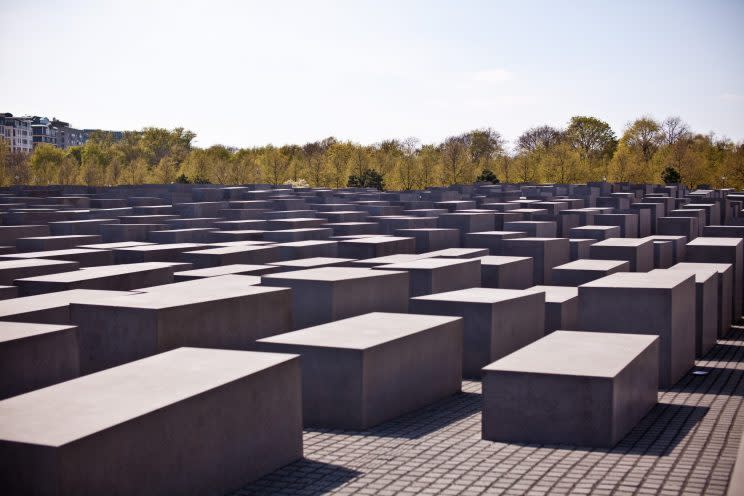
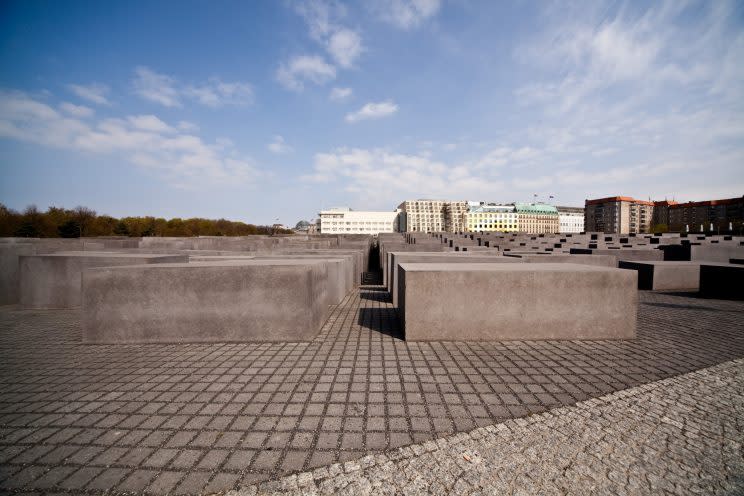
The most public Holocaust memorial site — besides concentration camps such as Auschwitz, Dachau and Sachsenhausen — sits in the middle of Berlin. Right next to the Brandenburg Gate and the Reichstag is the Holocaust Memorial to the Murdered Jews of Europe designed by architect Peter Eisenman. The massive solemn stone slabs of varying sizes are encamped like a giant maze on 19,000 square metres of land.
Eisenman’s memorial, which has an undulating ground, is about getting visitors to “descend into a personal hell.” He told Spiegel magazine in 2005, when it opened, that the memorial was “for Germans. Not for Jews.”
“It’s a wonderful expression of the German people to place something in the middle of their city that reminds them — could remind them — of the past,” he said at the time. The architect had also fought the creation of an information centre located under the site, which he felt wasn’t necessary.
Adam Kerpel-Fronius begs to differ. Kerpel-Fronius is an historian with the European Sites of Remembrance and often takes people around the site as well as other Holocaust sites such as the Memorial to the Persecuted Homosexuals and the Sinti and Roma Memorial, located close by.
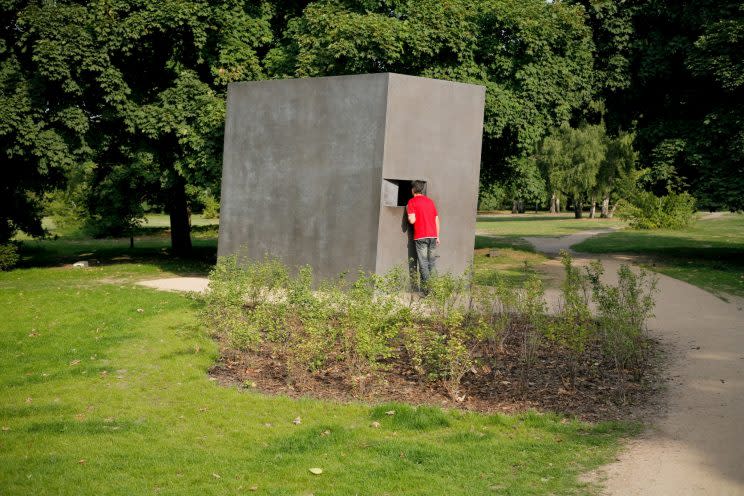
“As historians, we are concerned with specifics,” he told Yahoo Canada News. “In Germany, we had arguments in the 1990s about how art could tell about the Holocaust. Of course the stones at the memorial have to be experienced physically but it is such a large-scale. What does it mean?”
Kerpel-Fronius said the addition of the information centre, which goes into detail about the lives and deaths of 15 Jewish families from all over Europe, provides both context and that vital concept called “empathy.”
“Other museums in Germany do well to describe the structure of Nazi power,” he said. “Here, we concentrate on the lives and deaths of the victims. Because, you can not assume people know who the victims of the Nazi’s were. Fifty, 100 years from now, we need visitors to understand about the victims.”
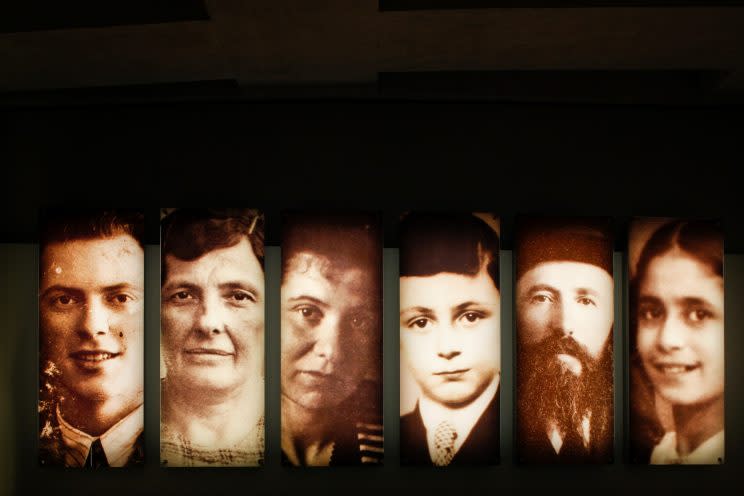
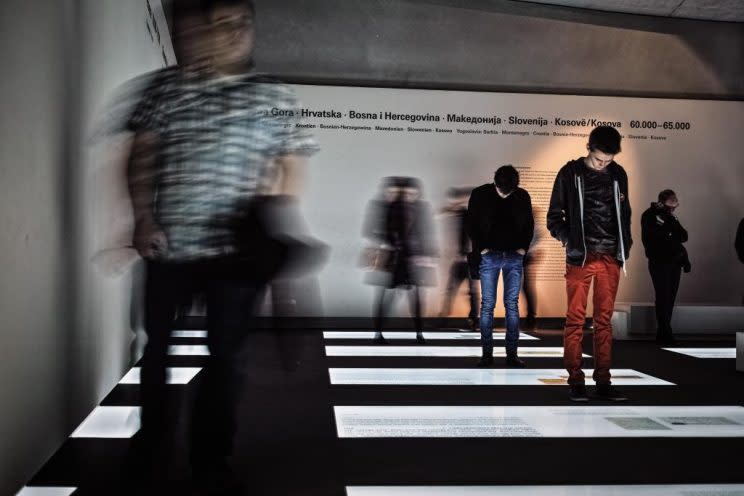
The concept is to break the anonymity of the numbers of victims.
Upon entering the information centre, you are confronted by six portraits of Jewish individuals who were deported to camps. One is Zdenek Konas, an 11-year old boy from Prague who was deported to the concentration camp of Theresienstadt. Next to his picture is the word “Missing.” After learning about the lives of the 15 families, the visitor encounters an overview of the sites of annihilation on a map of Europe with screens featuring photographs and films of the time.
‘People have to be confronted with it’
Siegemund, director of the Centrum Judaicum, agrees with much of what has been done in Germany.
“You have to do it consistently and in a broad manner,” she told Yahoo Canada News. “It’s about teaching history via the experiences of the individual but also the historical structures. What can lead to such a catastrophe? What was the way of thinking at the time? what did people do?”
Siegemund says the Holocaust Memorial in the middle of the capital was important, but Holocaust remembrance is also far-reaching — it has to be memorialized locally. The topic is also taught in German schools.
“People have to be confronted with it in daily life,” she said. “There are memorial sites all over Germany. You can not change the past but you must confront it.”

Berlin artist Guenther Demnig is often lauded for his ever-growing project. Starting in 1997, Demnig began installing small, brass squares inscribed with the name and details about the deaths of people who once lived in apartments all over Berlin and towns in Germany. The Stolperstein, or “stumbling stones,” now number more than 30,000.
“It is very useful to have everyday memorials,” noted Klein, from the Holocaust Communications course. “Whether you are a German or a tourist, you ‘stumble’ onto these stones and you suddenly have to look back into history.”
Klein’s school isn’t just concerned with how memorials “speak” to the public, students also analyze how a system operated to conduct genocide.
“We also examine the perpetrators and the society surrounding the Holocaust,” said Klein. “You have to teach how a modern society became a murderous society.”
Klein’s students learn about the lives of individuals that worked within the Third Reich — everyone from secretaries to the men who ran the concentration camps.
“So we look at the rise of National Socialism but we also try to understand how a person can act in an extreme situation,” he explained. “It is a question of psychology and group dynamics. Why did these Germans act the way they did.”
In analyzing all aspects of Nazism and the Holocaust, Klein says his students come away able to teach or discuss about how the Holocaust happened.
“Crimes are committed by persons in your midst,” said Klein. “These crimes are taking place where you live.”
The Seven Fires Prophecy
The TRC documented at least 6,000 deaths from residential schools. In Winnipeg, Moran points out that record-keeping was shoddy in the early years and there are unmarked graves across Canada, leading some to estimate up to 40,000 children died.
He is determined to preserve the 18 schools still standing and almost 400 cemeteries as “evidence of cultural genocide.” The Centre will also establish a national home — yet to be developed — for the survivors and also for the Canadian public to have access to the information.
“You think about the concentration camps. They were in communities just like residential schools. Did anyone think about what was happening in them? When Canadians drive through a Reserve, do they stop to consider — Why do we have Reserves? Why are people so poor?”
For Moran, whose centre is barely a year old, there is much to consider when looking forward. The centre has an educational coordinator who acts as a consultant with schools and universities wanting to produce educational components.
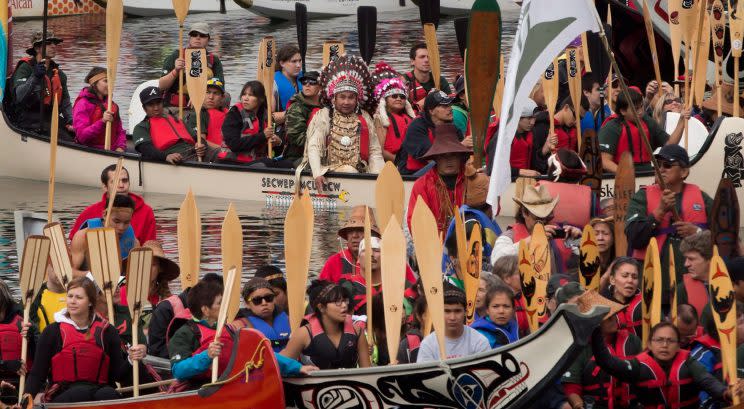
“We are seeking a mandatory curriculum, not just for children but for all people working in the public sphere — social workers, lawyers, public servants,” he said. “Indigenous people’s history have been suppressed and looked upon as inferior. Mis-education remains one of our greatest hurdles to reconciliation.”
Siegemund at the Jewish centre in Berlin, concurs.
“The starting point is probably not a memorial but to have decentralized teaching of the history, of what happened and then, you create the sites of remembrance,” she said.
Historian Kerpel-Fronius points out Germans weren’t ready to deal with the reality of The Holocaust until young people during the 1970s and 80s started questioning what exactly occurred.
“It was a long, difficult process. No one wanted to talk about it,” he said. “Now it is part of German culture.”
At this point in time, Moran feels there is an opportunity in Canada to take a conscientious step forward.
“I turn to the Anishinabe Seven Fires Prophecy,” said Moran. (Wenjack, who died from exposure and hunger alone in the Canadian wilderness, was part of the Anishinabe people.)
“Some elders argue we are now in the time of the lighting of the seventh fire: The Question Fire. We have a choice: do we keep perpetuating our social divides and go down the destructive path or, do we head to the higher plane, where we become unified and become One?”
CORRECTION: A previous version of this post stated the de-lousing scene occurs at the beginning of The Secret Path. It is not the opening scene. The story has been updated to reflect that.



